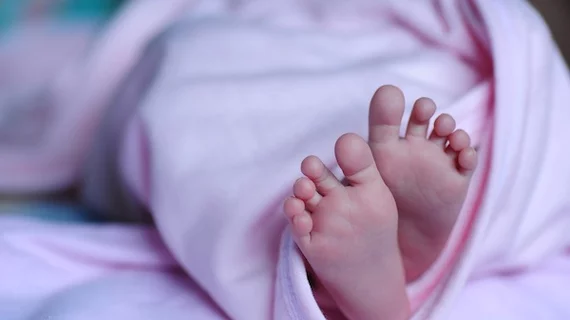Hospital-based smart pacifier could eliminate infant blood draws
Electrolyte monitoring is critical for infants in the intensive care unit, and a new AI monitoring solution may eliminate the need for twice-daily blood draws.
The solution is a smart pacifier that monitors electrolytes, using salivary-based detection for real-time, continuous monitoring of sodium and potassium levels. The monitoring can alert caregivers if infants are dehydrated, which can be a huge danger to premature infants or babies with other health issues.
The pacifier could cut out uncomfortable and frequent blood draws that could damage vulnerable skin or induce other complications. Infants in the neonatal intensive care unit (NICU) often require long hospital stays due to their healthcare needs, including low birth weight, premature birth or other health conditions. Continuous monitoring of electrolytes is essential to prevent the deterioration of conditions.
Researchers from Washington, Georgia and Korea presented design strategies for developing a smart pacifier bioelectronics that consists of a Bluetooth-embedded circuit and a sensor-integrated microfluidic channel. The researchers conducted a study to show the smart pacifier's potential as a wearable non-invasive platform for continuous and real-time monitoring of electrolytes through saliva. They published their findings in Biosensors and Bioelectronics.
“We know that premature babies have a better chance of survival if they get a high quality of care in the first month of birth,” Jong-Hoon Kim, associate professor at the Washington State University School of Engineering and Computer Science and a co-corresponding author on the study, said in a statement. “Normally, in a hospital environment, they draw blood from the baby twice a day, so they just get two data points. This device is a non-invasive way to provide real-time monitoring of the electrolyte concentration of babies.”
The pacifier can not only reduce pain and invasiveness of electrolyte monitoring, but it can also provide more data points where blood tests may leave gaps. Other salivary-based electrolyte detection systems are typically bulky and rigid devices that require separate sample collection. The pacifier device was used from a commercially available pacifier with a system that naturally attracts saliva, so it doesn’t require any pumping system.
The channels sense potassium and sodium ions in the saliva, and the data is relayed wirelessly through bluetooth technology. Researchers next plan to make this device more recyclable and affordable. Then, they will work to set up a larger test of the smart pacifier to establish its efficacy. Development of the device could be a big improvement on care quality and comfort of infants.
“You often see NICU pictures where babies are hooked up to a bunch of wires to check their health conditions such as their heart rate, the respiratory rate, body temperature, and blood pressure,” Kim said. “We want to get rid of those wires.”

